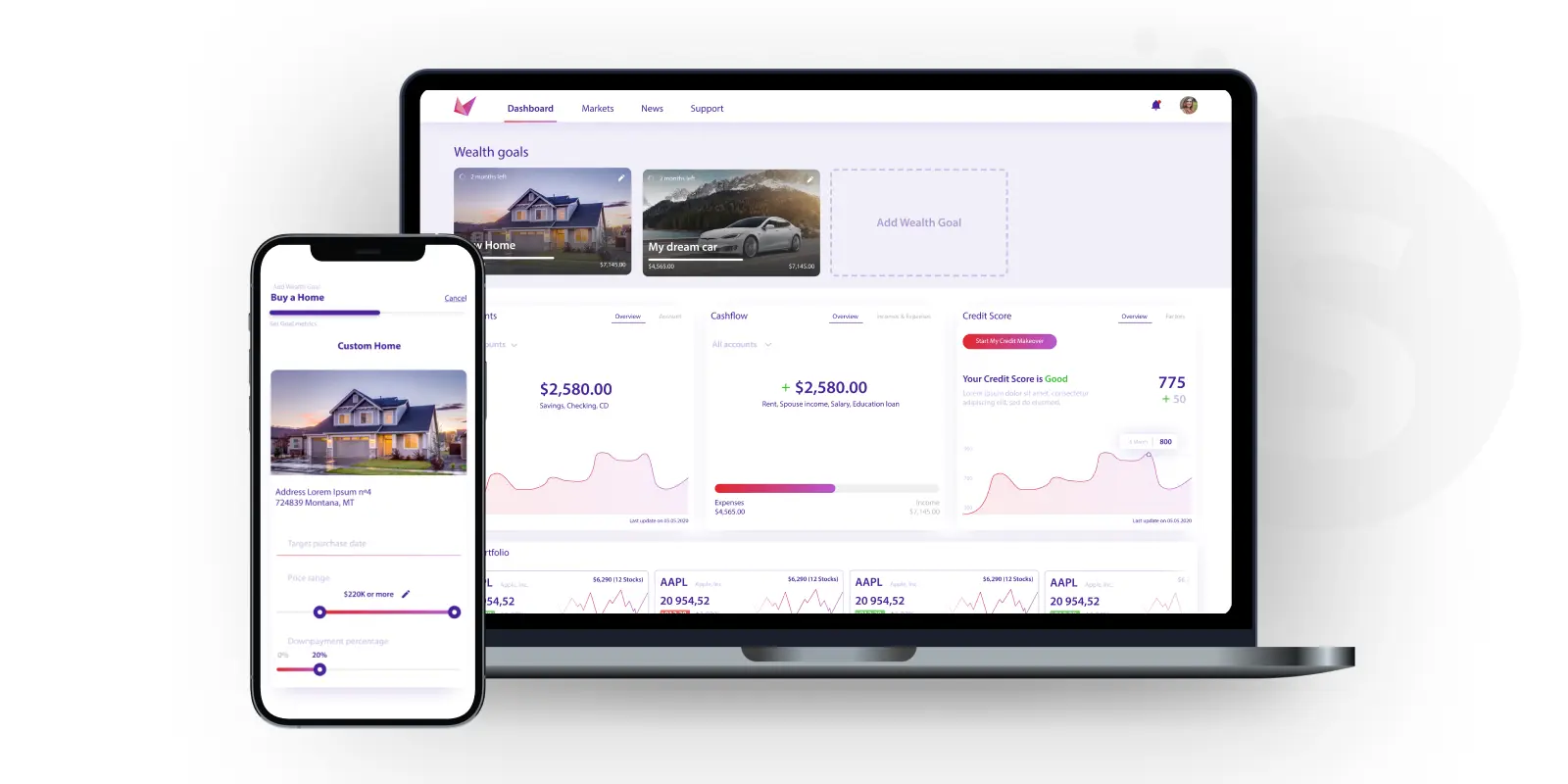Introduction
Lending money is a practice that has been around for centuries, playing a crucial role in the functioning of economies and enabling individuals and businesses to meet their financial needs. Whether you’re considering becoming a lender or seeking a loan, understanding the basics of lending money is essential.
At its core, lending money involves providing funds to an individual, organization, or government entity with the expectation that they will repay the borrowed amount within a specified time frame, often with interest. Lending can take various forms, such as personal loans, business loans, mortgages, or even peer-to-peer lending platforms.
One of the key factors driving the lending market is the opportunity to generate income from interest charged on the loan. Lenders can earn a profit by charging borrowers interest based on the risk involved, the loan amount, and the duration. Additionally, being a lender allows individuals or institutions to diversify their investment portfolio and potentially achieve higher returns compared to more traditional investment options.
However, lending money is not without its risks. Lenders face the possibility of borrowers defaulting on their loans, leading to potential financial losses. It’s important to carefully assess and manage these risks when considering lending money.
In this article, we will explore the basics of lending money, the various types of lenders, the process of becoming a lender, and the important factors to consider when evaluating borrowers and managing risks. We will also discuss the legal and regulatory framework surrounding lending activities and the steps to take when a borrower defaults on a loan. Lastly, we will explore alternative ways to lend money that have emerged in the modern digital age.
Understanding the Basics of Lending Money
Lending money is a fundamental practice in finance that involves providing financial resources to individuals, businesses, or institutions. It allows borrowers to access the funds they need to achieve their goals while providing lenders with an opportunity to earn a return on their investment.
When lending money, it is important to consider several key factors. First and foremost is the principal amount, which is the initial sum of money being borrowed. This amount can vary greatly depending on the borrower’s needs and the lender’s willingness to lend. Lenders also have the option to charge interest on the loan, which is a percentage of the principal that the borrower must pay in addition to repaying the borrowed amount.
Interest rates can be fixed or variable, meaning they may remain the same throughout the loan term or fluctuate based on market conditions. The interest rate is determined by various factors, including the borrower’s creditworthiness, the length of the loan, and prevailing market rates. Lenders may also charge fees, such as origination fees or late payment fees, to cover administrative costs or compensate for additional risk.
The loan term refers to the duration over which the borrower is expected to repay the loan. Loans can have short-term durations, such as a few months, or long-term durations, spanning several years. The loan term will impact the overall cost of the loan and the monthly payment amount for the borrower.
Collateral is another important aspect of lending money. It refers to assets or property that the borrower pledges as security for the loan. In the event of default, the lender can seize the collateral to recover some or all of the outstanding debt. Common forms of collateral include real estate, vehicles, or financial assets. Collateral provides lenders with a level of protection against potential losses.
As a lender, it is crucial to assess the creditworthiness of potential borrowers before approving a loan. This involves evaluating their financial stability, credit history, income, and other relevant factors to determine whether they are likely to repay the loan. Lenders may also consider the purpose of the loan, as certain types of loans, such as business loans or mortgages, may carry different risks and require additional documentation.
Overall, understanding the basics of lending money is essential for both lenders and borrowers. It allows lenders to make informed decisions about whom to lend to and under what terms, while providing borrowers with access to the funds they need to achieve their financial objectives. By carefully considering the principal amount, interest rates, loan terms, collateral, and creditworthiness, both parties can engage in a mutually beneficial lending relationship.
Pros and Cons of Lending Money
Lending money can be a lucrative venture for lenders, but it also comes with its share of risks and considerations. Understanding the pros and cons of lending money is crucial for both lenders and borrowers to make informed decisions. Let’s explore some of the advantages and disadvantages of lending money.
Pros:
- Potential for High Returns: One of the primary advantages of lending money is the potential to earn a high return on investment. Lenders can charge interest on the loan, which provides them with a steady income stream over the loan term.
- Diversification: Lending money allows individuals or institutions to diversify their investment portfolio. By allocating capital to lending activities, they can reduce the overall risk exposure of their investment portfolio by diversifying across different asset classes.
- Control over Terms: Unlike other investment options, lenders have the freedom to set the terms of the loan. They can decide the interest rate, loan duration, and other conditions based on their risk appetite and market factors.
- Collateral Protection: Lenders have the option to secure the loan with collateral, reducing the risk of potential losses. Collateral serves as a guarantee that lenders can recover at least a portion of the outstanding debt if the borrower defaults on the loan.
Cons:
- Default Risk: One of the major downsides of lending money is the risk of borrower default. There is always a possibility that the borrower may be unable or unwilling to repay the loan, resulting in a loss for the lender.
- Creditworthiness Assessment: Evaluating the creditworthiness of borrowers can be a challenging process. Lenders need to carefully assess factors such as income, credit history, and financial stability to determine the risk of default. This process requires time, resources, and expertise.
- Legal and Regulatory Compliance: Lending money is subject to legal and regulatory requirements, which lenders must navigate. Compliance with these laws and regulations can be complex and may involve additional administrative and legal costs.
- Market and Economic Risk: Lenders are exposed to market and economic risks, as interest rates, market conditions, and borrower preferences can change over time. These factors can affect the profitability of lending activities.
Lending money can be a rewarding experience, but it’s important to carefully weigh the pros and cons before engaging in this practice. Lenders should conduct proper due diligence, assess potential risks, and have a clear understanding of their investment objectives. Likewise, borrowers should consider their repayment capabilities and carefully evaluate the terms and conditions of the loan before borrowing money.
Types of Lenders
When it comes to lending money, there are various types of lenders available in the market. Each type caters to different borrower needs and preferences. Understanding the different types of lenders can help borrowers find the best financing option for their specific requirements. Let’s explore some common types of lenders:
1. Traditional Banks: Traditional banks, also known as commercial banks, have been the primary source of lending for many years. They offer a wide range of loan products and services, including personal loans, mortgage loans, and business loans. Traditional banks usually have strict lending criteria and require borrowers to meet specific qualifications.
2. Credit Unions: Credit unions are non-profit financial cooperatives that are owned and operated by their members. These institutions provide lending services to their members at competitive rates. Credit unions often have more lenient lending criteria compared to traditional banks.
3. Online Lenders: Online lenders have gained significant popularity in recent years. These lenders operate entirely online and offer various loan products, including personal loans, student loans, and small business loans. Online lenders typically provide a streamlined application process and may have faster approval times compared to traditional lenders.
4. Peer-to-Peer (P2P) Lenders: P2P lending platforms connect individual lenders with borrowers. These platforms facilitate the lending process and allow individuals to lend money directly to borrowers. P2P lenders often offer competitive interest rates and flexible borrowing terms.
5. Microfinance Institutions: Microfinance institutions focus on providing financial services, including lending, to low-income individuals and communities. These lenders aim to promote financial inclusion and support small businesses in underserved areas.
6. Private Lenders: Private lenders are individuals or organizations that provide loans outside of traditional financial institutions. They may offer specialized loans, such as hard money loans for real estate investments or bridge loans for short-term financing needs. Private lenders often have more flexibility in their lending criteria but may charge higher interest rates.
7. Government Institutions: The government also plays a significant role in lending through institutions like the Small Business Administration (SBA) in the United States. These institutions offer loan programs and guarantees to support specific sectors or borrowers who meet certain criteria.
It’s important for borrowers to carefully consider their needs, financial situation, and preferences when choosing a lender. Each type of lender has its own advantages and disadvantages, and borrowers should compare interest rates, terms, fees, and customer service to make an informed decision. Seeking guidance from financial advisors or professionals can also be helpful in choosing the right lender.
How to Become a Lender
Becoming a lender can be an attractive option for individuals or institutions looking to diversify their investment portfolio and potentially generate a passive income stream. While the process of becoming a lender may vary depending on the specific lending activity, there are several common steps to consider. Let’s explore how to become a lender:
1. Define Your Lending Strategy: Determine the type of lending activity you want to engage in. Decide whether you want to provide personal loans, business loans, mortgage loans, or other types of financing. Understanding your lending niche will help you identify target borrowers and tailor your lending approach accordingly.
2. Assess Your Financial Position: Evaluate your financial resources and determine how much capital you are willing to allocate towards lending. This will impact the size and frequency of the loans you can provide. Determine the level of risk you are comfortable with and how it aligns with your financial goals.
3. Educate Yourself: Familiarize yourself with the lending industry, including the regulatory framework, common lending practices, and risk management strategies. Stay updated on industry trends and seek educational resources or professional advice to enhance your understanding.
4. Establish a Legal Structure: Depending on your lending activity, you may need to establish a legal structure for your lending operations. Consult with legal professionals to determine the appropriate structure, such as registering as a sole proprietorship, partnership, limited liability company (LLC), or corporation.
5. Develop a Risk Assessment Framework: Create a robust risk assessment framework to evaluate potential borrowers. Define criteria for assessing creditworthiness, repayment capacity, and collateral requirements. Establish processes for conducting due diligence on borrowers and managing risks effectively.
6. Build a Network: Establish connections within the lending community, such as networking with other lenders, joining lending associations, or attending industry events. Building a strong network can provide valuable insights, collaboration opportunities, and access to potential borrowers.
7. Implement Technology and Infrastructure: Utilize technology solutions to streamline your lending operations. Invest in loan management software, online platforms, and digital tools to improve efficiency, automate processes, and enhance borrower experience. Implement proper security and data protection measures to safeguard borrower information.
8. Market and Promote Your Lending Services: Develop a marketing strategy to reach potential borrowers. Utilize online and offline channels to raise awareness about your lending services. Create a professional website, engage in targeted advertising campaigns, and leverage social media platforms to attract borrowers.
9. Comply with Legal and Regulatory Requirements: Ensure compliance with relevant laws and regulations governing lending activities, such as consumer protection laws, privacy regulations, and anti-money laundering legislation. Stay updated on legal requirements and consult with legal professionals to navigate any regulatory complexities.
10. Monitor and Adapt: Continuously monitor your lending portfolio and adjust your lending strategy as needed. Regularly evaluate borrower performance, reassess risk levels, and make informed decisions regarding loan renewals, refinancing, or collection efforts.
Embarking on a lending journey requires careful planning, education, and adherence to legal and ethical principles. By following these steps and continuously improving your lending practices, you can position yourself as a reputable lender and realize the potential benefits of lending money.
Evaluating Borrowers and Managing Risks
Evaluating borrowers and managing risks is a critical aspect of lending money. Lenders must carefully assess the creditworthiness, financial stability, and repayment capacity of potential borrowers to minimize the risk of default. Let’s explore some key factors to consider when evaluating borrowers and managing risks:
1. Credit History: Review the borrower’s credit history to understand their past borrowing behavior and repayment patterns. Check their credit score, credit reports, and any previous loan delinquencies or defaults. A strong credit history indicates a higher likelihood of timely repayment.
2. Income and Financial Stability: Evaluate the borrower’s income sources, employment stability, and overall financial health. Assess their ability to generate sufficient income to cover loan repayments. Review bank statements, tax returns, and other financial documents to gauge financial stability.
3. Debt-to-Income Ratio: Calculate the borrower’s debt-to-income ratio, which compares their total monthly debt payments to their monthly income. A lower ratio indicates a higher capacity to handle additional debt obligations and suggests a lower risk of default.
4. Collateral: If the loan is secured by collateral, carefully assess the value, quality, and marketability of the collateral. Conduct thorough due diligence to ensure that the collateral provides adequate protection against potential losses in the event of default.
5. Loan-to-Value Ratio: Determine the loan-to-value (LTV) ratio, which compares the loan amount to the value of the collateral. A lower LTV ratio indicates a lower risk for the lender as it provides a greater equity cushion and reduces the risk of potential losses.
6. Cash Flow Analysis: For business loans, analyze the borrower’s cash flow to assess their ability to generate sufficient revenue to repay the loan. Evaluate their profitability, revenue streams, expenses, and future growth prospects to identify potential risks to cash flow.
7. Risk Mitigation Strategies: Implement risk mitigation strategies such as diversifying your lending portfolio, establishing risk thresholds, and setting appropriate loan terms and interest rates. Consider incorporating risk-sharing mechanisms, such as requiring co-signers or obtaining loan guarantees.
8. Ongoing Monitoring: Regularly monitor borrowers’ repayment behavior and financial status throughout the loan term. Stay vigilant for any signs of financial distress or changes in creditworthiness. Act promptly if the borrower demonstrates signs of default or non-payment risk.
9. Communication and Customer Relationship Management: Foster open lines of communication with borrowers to build trust and address any concerns or issues promptly. Maintain a strong customer relationship management approach that focuses on transparency, timely communication, and proactive risk management.
10. Compliance with Regulations: Ensure compliance with relevant lending laws and regulations. Stay updated on changes in lending regulations and adapt your lending practices accordingly. This includes complying with anti-money laundering regulations, usury laws, and fair lending practices.
By effectively evaluating borrowers and managing risks, lenders can make informed lending decisions, minimize the risk of default, and ensure the long-term sustainability of their lending operations. Implementing a thorough and systematic approach to assess borrowers’ creditworthiness and manage risks is essential for successful lending activities.
Legal and Regulatory Considerations in Lending Money
Lending money involves navigating a complex legal and regulatory landscape to ensure compliance and protect the rights of both lenders and borrowers. Understanding the key legal and regulatory considerations is essential for lenders to operate within the boundaries of the law and maintain a fair and transparent lending process. Let’s explore some important legal and regulatory aspects to consider when lending money:
1. Consumer Protection Laws: Lenders must comply with consumer protection laws designed to safeguard borrowers from predatory lending practices. These laws regulate areas such as interest rates, fees, loan disclosures, and fair lending practices, ensuring that borrowers are treated fairly and transparently.
2. Privacy Regulations: Lenders must adhere to privacy regulations to safeguard the personal and financial information of borrowers. Compliance with laws such as the General Data Protection Regulation (GDPR) or the California Consumer Privacy Act (CCPA) is crucial to protect sensitive borrower data and prevent data breaches.
3. Usury Laws: Usury laws set limits on the interest rates that lenders can charge borrowers. It is important for lenders to be aware of the usury laws in their jurisdiction to avoid charging excessive interest rates that may be considered unlawful.
4. Anti-Money Laundering (AML) Compliance: Lenders must implement anti-money laundering measures to prevent their services from being used for illicit activities. These measures include customer due diligence, know your customer (KYC) procedures, and reporting suspicious transactions to the appropriate authorities.
5. Licensing and Registration: Lenders may be required to obtain specific licenses or registrations to operate legally in their jurisdiction. Compliance with licensing requirements demonstrates credibility and ensures that lenders meet certain standards and regulations.
6. Fair Debt Collection Practices: Lenders must adhere to fair debt collection practices when recovering unpaid debts. This includes following guidelines regarding communication, transparency, and respecting the rights of borrowers throughout the collection process.
7. Truth in Lending Act (TILA): Lenders must comply with the Truth in Lending Act, which requires lenders to disclose the terms and costs of loans to borrowers. This includes providing clear and accurate information about interest rates, fees, repayment terms, and other relevant loan details.
8. Securities Laws: If lenders offer investment opportunities or participate in crowdfunding activities, they must comply with securities laws that regulate the sale and issuance of securities. This may involve registering with securities regulatory authorities or qualifying for specific exemptions.
9. State-specific Regulations: Lending activities may be subject to state-specific regulations, such as usury limits, licensing requirements, or disclosure obligations. Lenders must be familiar with and comply with the laws of the states in which they operate or lend to borrowers.
10. Contractual Agreements: Lenders should establish clear and enforceable contractual agreements with borrowers that outline the terms and conditions of the loan, including repayment terms, interest rates, fees, and any other relevant provisions. These agreements protect both parties’ interests and help resolve any disputes that may arise during the lending process.
Adhering to legal and regulatory considerations is crucial for lenders to build trust with borrowers, mitigate legal risks, and maintain a reputable lending business. It is recommended that lenders consult with legal professionals or regulatory experts to ensure compliance with relevant laws and regulations and stay updated on any changes or new requirements in the lending industry.
Steps to Take When a Borrower Defaults
When a borrower defaults on a loan by failing to make timely payments or meet the terms of the loan agreement, it’s important for lenders to take prompt and appropriate action. Dealing with loan defaults requires a structured approach to mitigate losses and recover as much of the outstanding debt as possible. Here are some key steps to take when a borrower defaults:
1. Communication: Initiate communication with the borrower as soon as they miss a payment or show signs of default. Inform them about the missed payment and the consequences of continued non-payment. Understand the reasons behind the default and explore potential solutions or payment arrangements.
2. Debt Collection Efforts: If the borrower fails to respond or cooperate, escalate the situation by initiating debt collection efforts. This may involve sending collection letters, making phone calls, or employing the services of a third-party collections agency to recover the outstanding debt.
3. Legal Action: If all attempts to collect the debt are unsuccessful, consider pursuing legal action against the defaulting borrower. Consult with legal professionals to understand the legal options available, such as filing a lawsuit or obtaining a judgment against the borrower.
4. Asset Seizure: If the loan is secured by collateral, such as property or vehicles, exercise your rights to seize and sell the collateral to recover the outstanding debt. Follow the necessary legal procedures and adhere to any state-specific rules governing repossession and asset liquidation.
5. Debt Settlement or Restructuring: In some cases, it may be beneficial to negotiate a debt settlement or restructuring arrangement with the borrower. This could involve accepting a reduced amount as full payment or modifying the terms of the loan to make it more affordable for the borrower while ensuring a reasonable recovery for the lender.
6. Credit Reporting: Report the default to credit bureaus, which will negatively impact the borrower’s credit score. This serves as a deterrent to future borrowing and highlights the default to other potential lenders.
7. Documentation and Records: Maintain accurate records of all communication, payment history, and collection efforts related to the defaulted loan. These records will be crucial if legal action is required or if the borrower challenges the debt in the future.
8. Professional Assistance: If the situation becomes complex or legal action is necessary, seek the assistance of legal professionals or debt collection agencies experienced in handling defaulted loans. They can provide guidance, ensure compliance with legal requirements, and increase the likelihood of successful debt recovery.
9. Assessing Lessons Learned: After resolving the default situation, evaluate the factors that contributed to the borrower’s default and identify any areas for improvement in your lending practices. Use this experience to enhance your risk assessment process, refine lending terms, and implement measures to minimize future defaults.
10. Continued Monitoring and Precautions: Learn from the default experience and strengthen your risk management practices. Implement measures to monitor borrower repayment patterns, conduct regular portfolio reviews, and proactively identify potential signs of default to prevent future defaults.
Dealing with loan defaults requires a proactive approach and adherence to legal and regulatory guidelines. By following these steps and seeking professional advice as needed, lenders can effectively navigate the default process and mitigate financial losses.
Recovering Funds and Dealing with Bad Debt
Recovering funds and dealing with bad debt is an inevitable part of lending. When borrowers default on loans, lenders must take specific actions to recover the outstanding funds and mitigate the impact on their financial position. Here are some steps to consider when recovering funds and dealing with bad debt:
1. Assessing the Debt: Evaluate the defaulted loan and determine the likelihood of recovering the funds. Consider the borrower’s financial situation, available assets, and any collateral securing the loan. This assessment will help you determine the appropriate course of action.
2. Negotiation and Settlement: Attempt to negotiate a settlement with the borrower. This could involve accepting a reduced amount as full payment or establishing a repayment plan. Be open to dialogue and explore options that are mutually beneficial, keeping in mind the potential costs and the chances of recovering the entire debt.
3. Collection through Internal Resources: Allocate internal resources to actively pursue the debt. Assign a dedicated team or department to handle debt recovery efforts. In-house collections may involve sending reminders, making phone calls, and using other communication channels to encourage repayment.
4. Third-Party Collection Agencies: Engage the services of a reputable third-party collection agency if internal efforts prove unsuccessful. These agencies specialize in debt recovery and have expertise in handling challenging cases. Ensure the agency adheres to ethical practices and complies with relevant laws and regulations.
5. Legal Measures: Consider legal action if all other recovery efforts fail. Consult with legal professionals to determine the best course of action based on the specific circumstances. This may involve filing a lawsuit, obtaining a judgment, or pursuing other legal remedies available in your jurisdiction.
6. Asset Liquidation: If the loan is secured by collateral, follow the legal procedures to seize and sell the collateral to recover the outstanding debt. Proceeds from the asset liquidation can be used to satisfy the debt. Ensure compliance with applicable laws to avoid any legal complications.
7. Write-Off and Tax Considerations: Assess the feasibility of writing off the bad debt as a loss for tax purposes. Consult with accounting professionals to determine the appropriate treatment and any tax benefits or implications of the write-off.
8. Reporting to Credit Bureaus: Report the default and subsequent debt recovery efforts to credit bureaus. This ensures that the borrower’s credit history reflects the default, making it difficult for them to obtain credit in the future. Compliance with reporting regulations is crucial to avoid legal and reputational risks.
9. Mitigating Future Default Risks: Learning from bad debt experiences, identify patterns or gaps in your lending practices. Enhance your risk assessment processes, tighten creditworthiness evaluations, and implement measures to prevent future defaults. Regularly review and update your lending policies and procedures to minimize the risk of bad debts.
10. Professional Advice and Support: Seek the guidance of legal, financial, and accounting professionals to navigate the complexities of recovering funds and managing bad debt. They can provide valuable insights, assist with legal matters, and ensure compliance with applicable regulations.
Recovering funds and dealing with bad debt can be a challenging and time-consuming process. By following these steps, implementing effective debt recovery strategies, and taking appropriate legal measures, lenders can enhance their chances of recovering funds and safeguard their financial interests.
Alternative Ways to Lend Money
In addition to traditional lending institutions, there are alternative ways to lend money that have emerged with the advent of technology and changing consumer preferences. These alternative lending options offer borrowers and lenders unique opportunities outside of the traditional banking system. Let’s explore some of the popular alternative ways to lend money:
1. Peer-to-Peer (P2P) Lending: P2P lending platforms connect individual lenders directly with borrowers, cutting out the traditional intermediaries like banks. Lenders can browse through borrower profiles, assess their creditworthiness, and choose whom to lend money to. P2P lending platforms provide an online marketplace that facilitates loan origination, servicing, and repayment.
2. Crowdfunding: Crowdfunding platforms allow individuals or businesses to raise funds by soliciting small contributions from a large number of people. Lenders (also known as backers) can participate in crowdfunding campaigns by providing funds to support specific projects, businesses, or causes. Crowdfunding can be reward-based, where contributors receive non-financial incentives, or investment-based, where lenders receive a potential return on their investment.
3. Microfinance: Microfinance institutions provide financial services, including lending, to individuals with limited access to traditional banking services. These institutions focus on supporting low-income individuals and communities, often in developing countries, by offering small loans to support income-generating activities and promote financial inclusion.
4. Invoice Financing: Invoice financing, also known as accounts receivable financing, allows businesses to borrow against their outstanding invoices. Lenders provide an advance on the value of unpaid invoices, allowing businesses to access much-needed working capital before their customers pay. Once the invoices are paid, the lenders receive the outstanding amount, along with fees or interest.
5. Merchant Cash Advances: Merchant cash advances are suitable for businesses with consistent credit card sales. In this arrangement, a lender provides a lump sum to a business in exchange for a portion of its future credit card sales. The lender recoups the advance by automatically deducting a set percentage from the business’s daily credit card transactions until the advance plus fees is repaid.
6. Online Business Lenders: Online business lenders offer an alternative to traditional bank loans for small and medium-sized enterprises (SMEs). These lenders leverage technology to streamline loan application and approval processes, often providing faster funding decisions and more flexible lending terms for businesses.
7. Crowdlending: Crowdlending, also known as peer-to-peer business lending, focuses specifically on connecting lenders with small businesses seeking financing. Similar to P2P lending, crowdlending platforms enable individuals or institutional investors to lend money to businesses in need of capital.
8. Cryptocurrency-based Lending: With the rise of cryptocurrencies, borrowers can access loans using digital assets as collateral. Cryptocurrency lenders facilitate lending transactions in cryptocurrencies, allowing borrowers to borrow funds by pledging their digital assets. The use of blockchain technology ensures transparency and security in these transactions.
9. Social Impact Lending: Social impact lenders focus on providing funding to businesses or individuals with a social or environmental mission. These lenders prioritize positive social impact alongside financial returns, offering loans to borrowers who align with specific social causes or who operate in underserved communities.
10. Community Development Financial Institutions (CDFIs): CDFIs are specialized financial institutions that support economic development and provide loans to businesses and individuals in low-income communities. These institutions often offer more flexibility in lending criteria and work towards fostering economic growth in disadvantaged areas.
These alternative ways to lend money provide borrowers with additional financing options and lenders with diverse investment opportunities. As with any lending activity, it’s important for both borrowers and lenders to carefully evaluate the terms, risks, and credibility of the lending platforms or institutions involved.

























